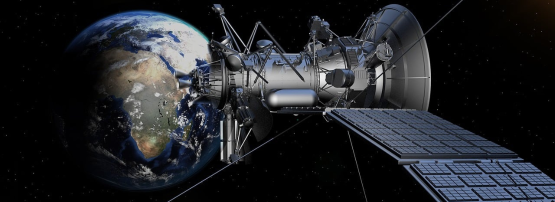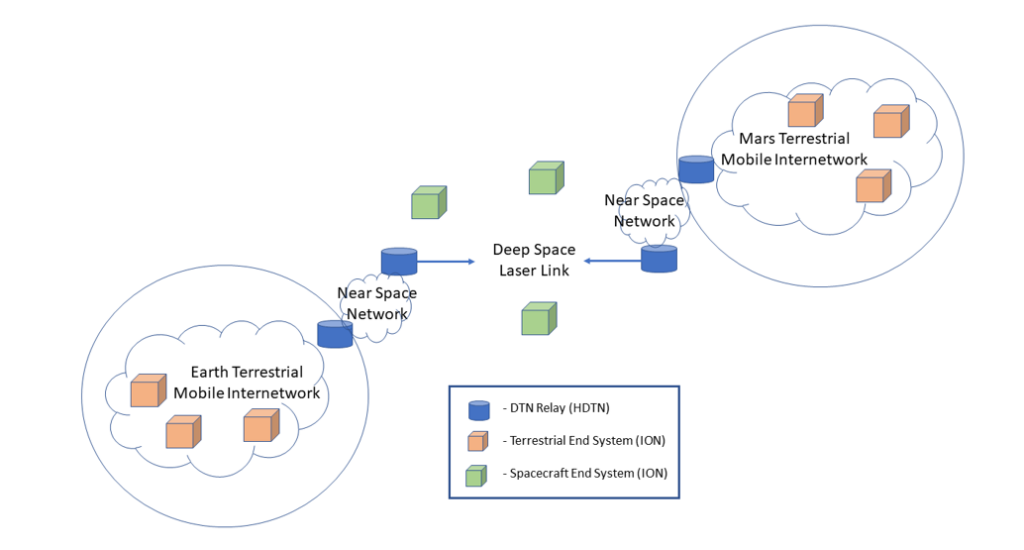
If you haven’t watched it yet, I recommend Marc Blanchet‘s presentation from the Internet Society’s webcast from 19 June 2025 titled: Using the IP Protocol Suite for Deep Space Networking – TIPTOP WG. Marc has been working for decades on the deployment of the Internet and related protocols in space, with a particular interest in the deep space networks, which connect Earth to satellites in orbit around other planets, asteroids, and our moon.
A brief history of deep space networking
Marc presented work undertaken in the Taking IP and TCP to Other Planets (TIPTOP) IETF Working Group. This work builds on related activity of the Delay/Disruption Tolerant Networking (DTN) Working Group, and the now-concluded Interplanetary Internet Research Group (IPNRG), which operated under the Internet Research Task Force (IRTF), which runs in parallel to the IETF.
Deep space networking has been a constant area of study since the advent of telemetry for rockets, which began at the end of the Second World War, along with the development of ground-based radar and radio communications.
This history is discussed in Robert Buderi’s extremely approachable and wide-ranging 1997 book ‘The Invention That Changed The World‘. The impact of research on developing microwave radar systems and subsequent improvements in electronics directly led to the emergence of the transistor. The transistor led, in turn, to the Very-Large-Scale Integration (VLSI) chip, which powers every aspect of the modern world.
Delay unifies space networking
Marc is active in the IETF Interplanetary Networking Special Interest Group (IPNSIG), which maintains a rich online library of publications. A glance through its materials and partner organizations reveals a body of work that is both rigorous and globally collaborative. Designing communication systems for deep space is, by nature, a highly constrained, complex, and time-intensive process. A student might complete a thesis on launching a communications service on a rocket, go on to build a full career in the field, and still retire before that rocket ever leaves the ground.
It’s clear why TIPTOP is built on top of DTN — delay is the one constant in deep space communications. There is no way to bypass the fundamental physical constraint of the speed of light. Any signal sent from Earth to the Moon, the asteroid belt, or other bodies within the solar system will inevitably experience transmission delays ranging from seconds to hours.

That delay is far too great for the Internet Protocol to operate effectively. As a result, space-based networking architectures must return to the pre-Internet ‘store-and-forward’ model, transferring discrete ‘bundles’ of data between nodes. Intermediate systems, such as satellites orbiting celestial bodies, can then relay these bundles to nearer, faster devices. This layered approach echoes the structure of the Internet, yet departs from its traditional end-to-end design. Internet protocols still play a role, but they are applied in more specialized ways, adapted to the extreme delay and noise conditions of their operating environments.
Space presents a uniquely challenging environment for communication. Hard radiation, extreme temperature shifts, and the distortion of signals over vast distances all affect data transmission. Every stage — from the software controlling an activity, to solar interference during transmission, to the ground stations at the other end of the ‘piece of string’ — introduces potential disruption. The protocol must therefore be resilient to loss, delay, and error throughout the entire communication process.
One small step for LAN
Marc’s interests extend well beyond protocol design. He has long been exploring what a future Internet on the Moon might look like — including concepts such as lunar Wi-Fi and systems to coordinate communications between research instruments and, eventually, human residents. Marc envisions an Internet that serves everyone on the Moon, seamlessly connecting them back to Earth. He has also considered the management of Internet number resources in this context, keeping the NRO informed of his ideas and the potential coordination needs such a network would entail.
The topic is fascinating, and Marc’s presentation on the topic is well worth watching and reflecting on.
The views expressed by the authors of this blog are their own and do not necessarily reflect the views of APNIC. Please note a Code of Conduct applies to this blog.
